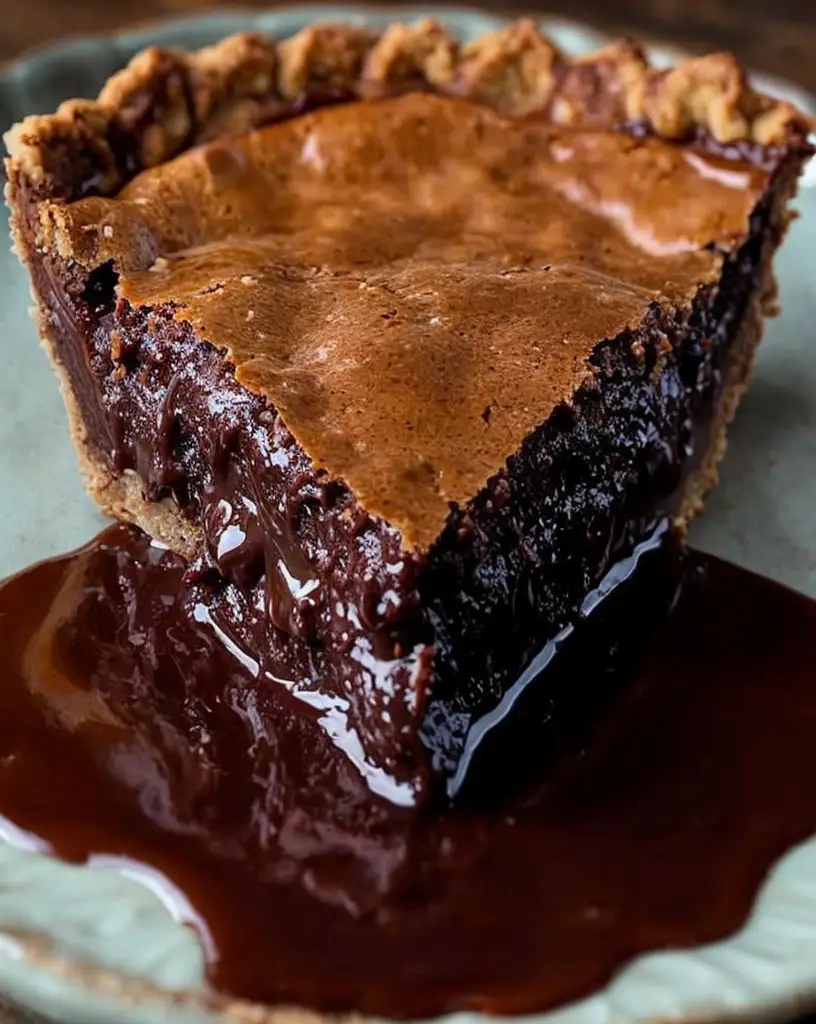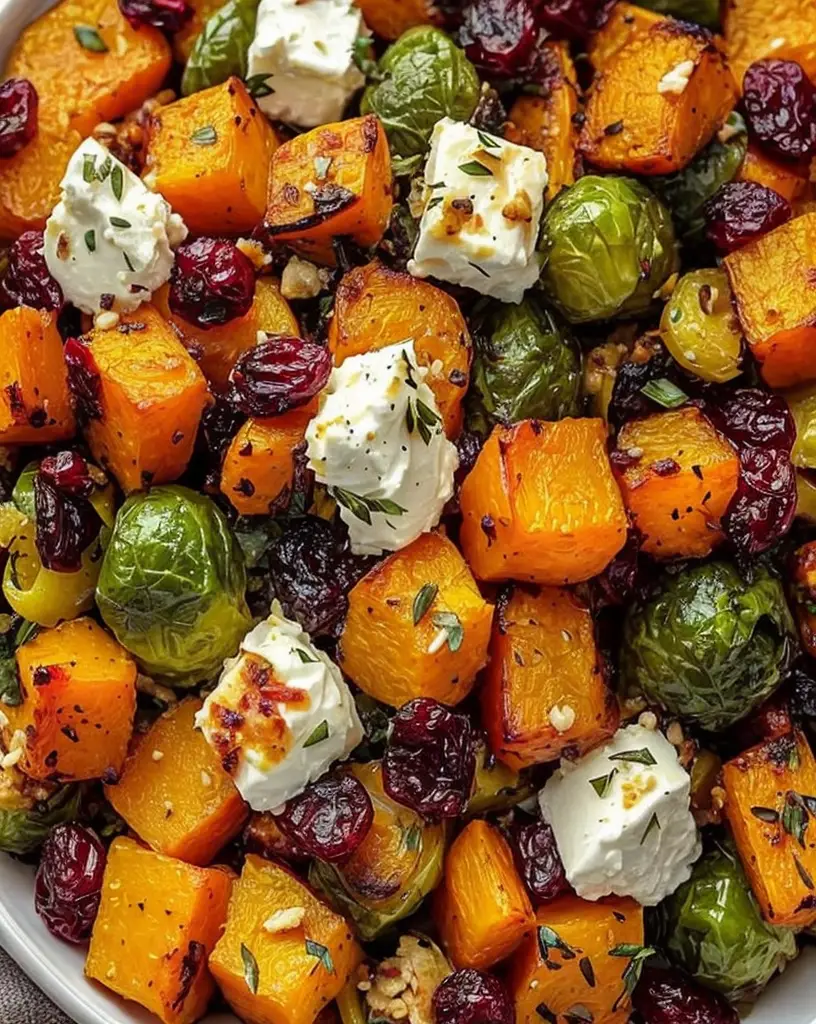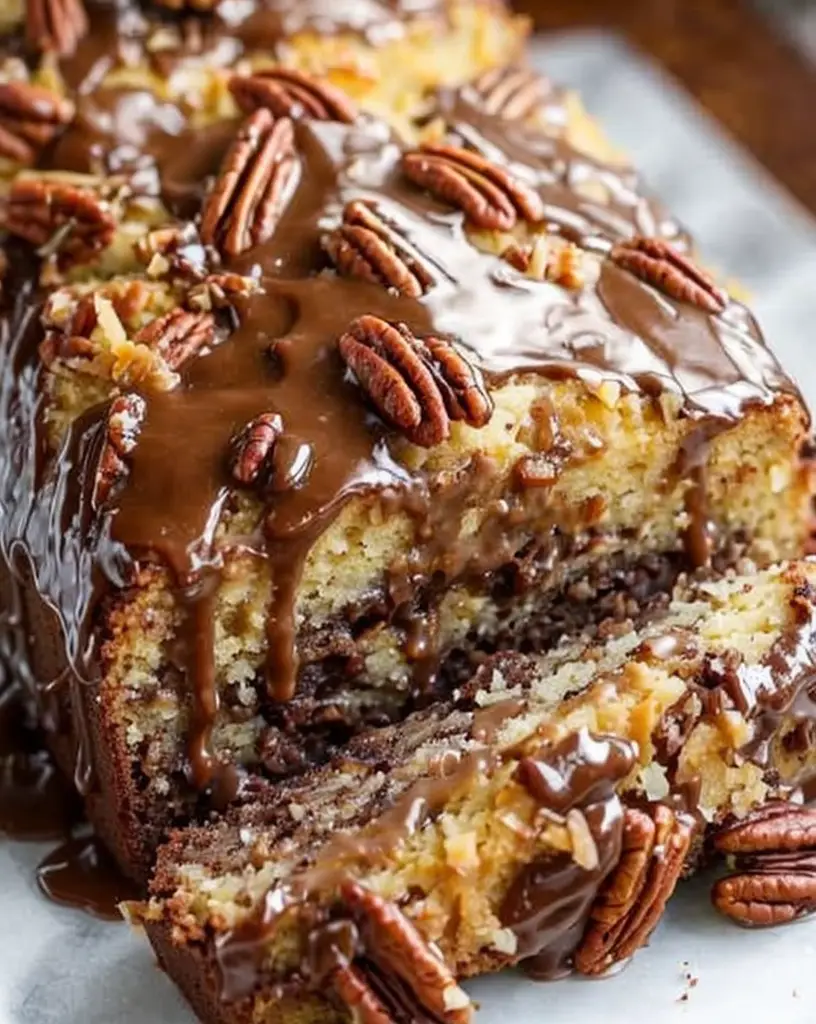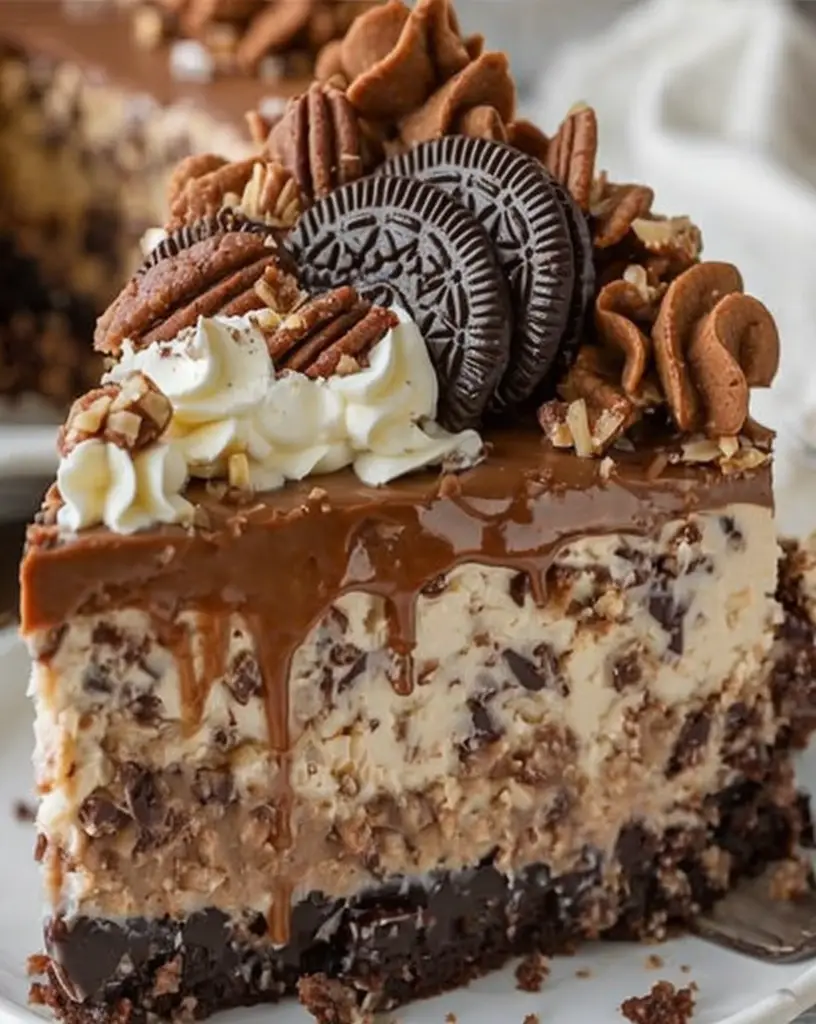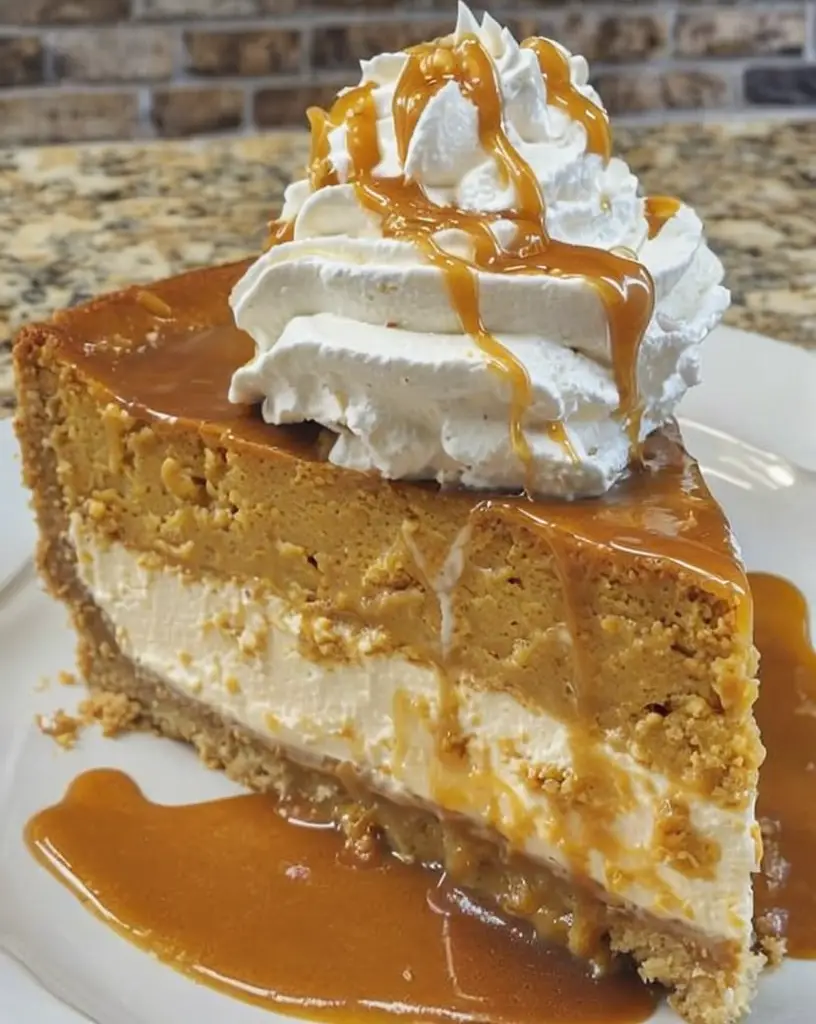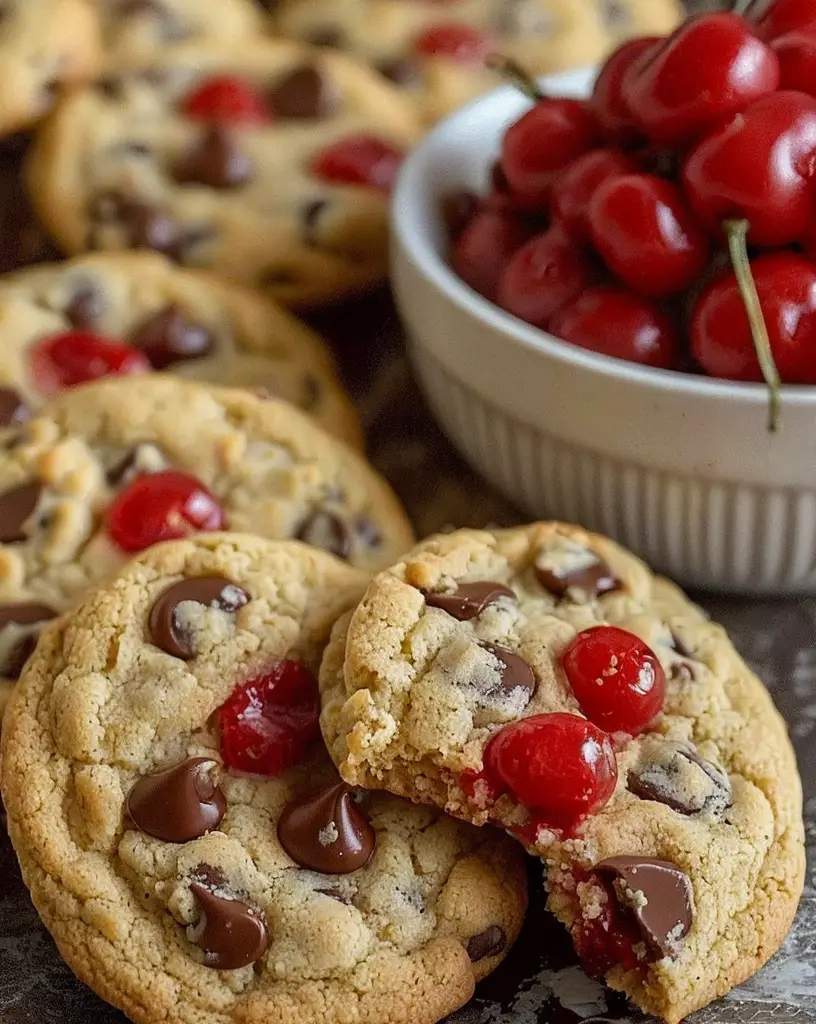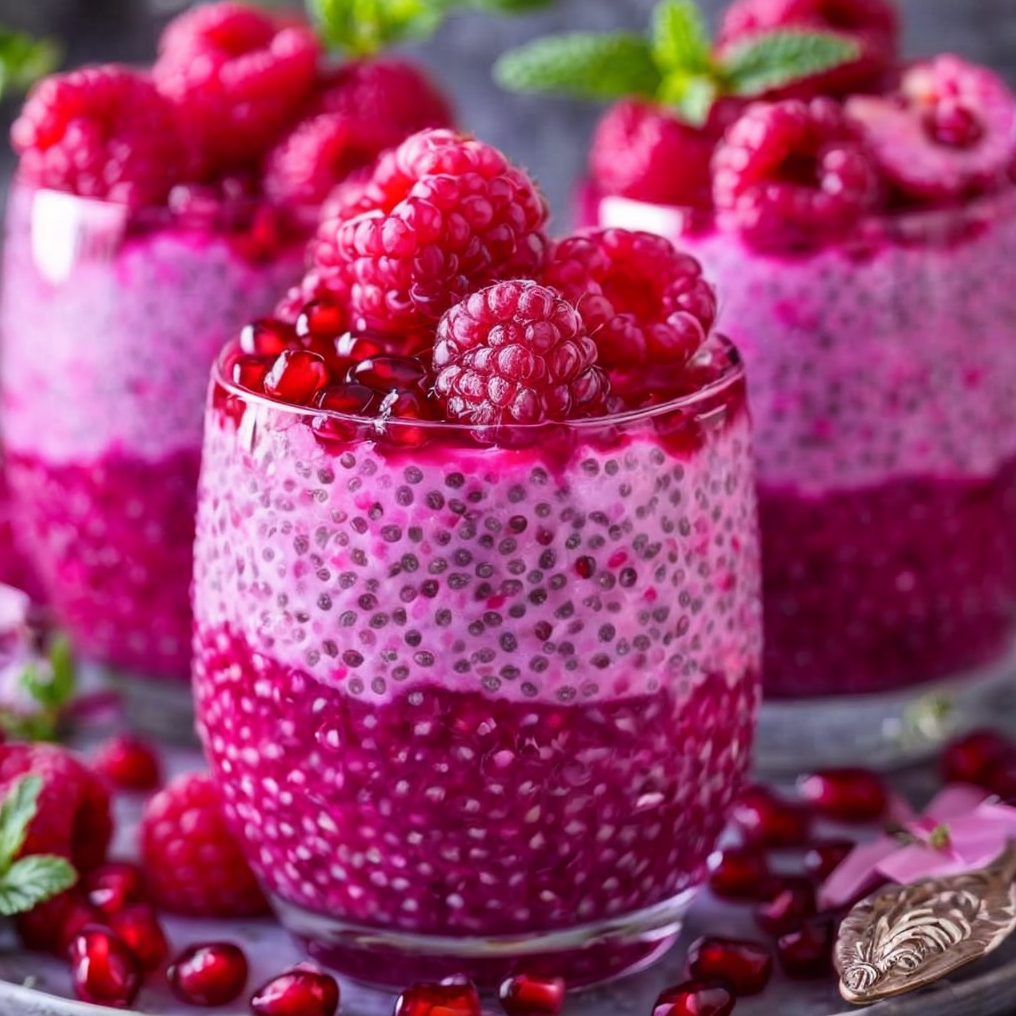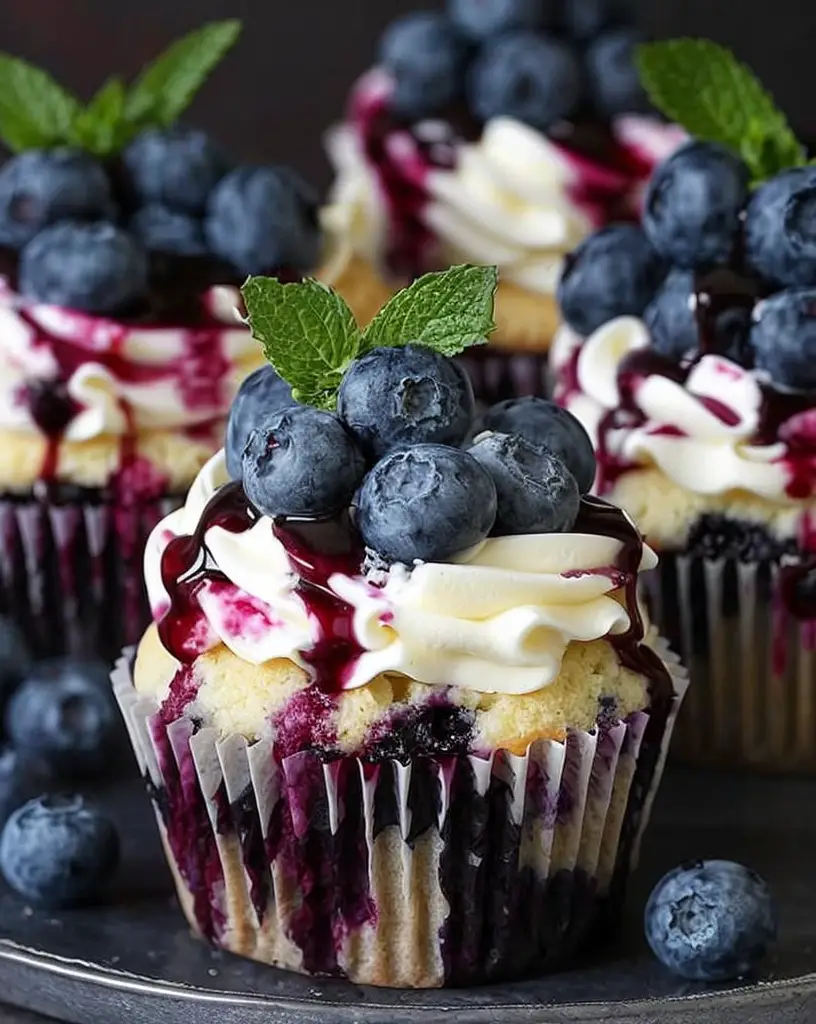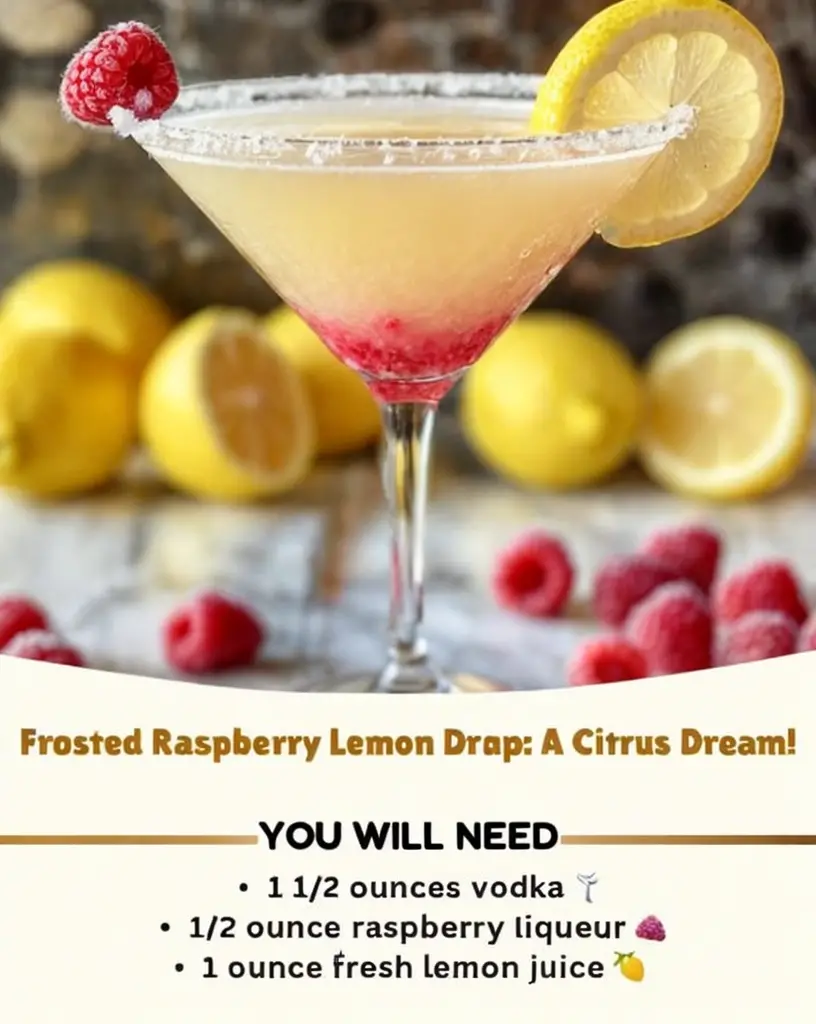Hot Fudge Pie Recipe: A Decadent Chocolate Delight
Satisfy your chocolate cravings with this indulgent Hot Fudge Pie recipe. With a rich and gooey filling encased in a crispy crust, this dessert combines the best elements of a brownie and a pie. Whether you’re hosting a cozy dinner or craving a midweek treat, this Hot Fudge Pie promises to be a showstopper. Enjoy the lingering sweetness and captivating aroma of chocolate in a pie that feels luxurious yet comforting.
Quick Recipe Highlights
- Flavor Profile: A rich, chocolaty decadence with a touch of vanilla
- Texture: Gooey and fudgy interior with a lightly crisp, flaky outer crust
- Aroma: Deep chocolate notes with hints of vanilla warmth
- Visual Appeal: Dark, glossy top with a delicate, cracked surface
- Skill Level Needed: Intermediate; requires baking knowledge and timing accuracy
- Special Equipment: Hand mixer, pie dish
Recipe Overview
- Difficulty Level: Moderate due to precise timing to achieve perfect fudgy consistency
- Category: Dessert, Chocolate Dessert
- Cuisine: American; echoes traditional Southern baking influences
- Cost: Relatively low; main cost factors are quality chocolate and heavy cream
- Season: Ideal for winter and fall, highlighting the comforting warmth of chocolate
- Occasion: Perfect for dinner parties, holiday gatherings, or Valentine’s Day
Why You’ll Love This Recipe
This Hot Fudge Pie is a culinary masterpiece for chocolate lovers. Its fudgy texture and rich flavor create a perfect balance of sweetness without being overpowering. Not only is it a treat for your senses, but it’s also relatively easy to prepare, making it a favorite for both novice bakers and seasoned chefs. The use of basic pantry ingredients ensures it’s a budget-friendly option. Whether enjoyed warm with a scoop of vanilla ice cream or cooled to room temperature, this pie is versatile and bound to impress any crowd. Its decadent nature makes it an elegant dessert choice for special occasions, yet it’s straightforward enough for an everyday indulgence.
Historical Background and Cultural Significance
Hot Fudge Pie finds its roots in Southern American kitchens, known for their inventive and comforting desserts. Originally, this dish was created as a way to enjoy the rich flavors of chocolate in a pie form, combining the best aspects of a cake and pudding. Over the decades, it has become a staple at community gatherings and holiday feasts, prized for its balance of simplicity and rich taste. Variations of this recipe can be found throughout the United States, each adding a personal twist, such as spiced undertones or nuts. Traditionally served warm, it complements the communal spirit of family meals and celebrations.
Ingredient Deep Dive
– **Chocolate**: Central to the pie’s flavor, dark chocolate brings richness and depth, contributing to both the taste and glossy appearance. Opt for high-quality chocolate with at least 60% cocoa content for best results. Store in a cool, dry place and avoid direct sunlight to maintain its integrity.
– **Butter**: Provides moisture and richness, giving the pie its tender crumb. Unsalted butter is preferred to control the pie’s salt level. When measuring, ensure it’s at room temperature for easy blending with sugars.
– **Eggs**: Serve as a leavening and structuring agent, contributing to the pie’s fudgy texture. Fresh eggs ensure fluffiness and aid in proper rising during baking. Beat until just combined to avoid a dense mixture.
– **Vanilla Extract**: Enhances the chocolate flavor and adds a sweet aroma. Pure vanilla extract is advised over synthetic for a more authentic taste. Store in a cool, dark place for longevity.
Common Mistakes to Avoid
- Overmixing the batter can lead to a dense pie. Mix until ingredients are just combined.
- Using cold butter or eggs can hinder proper blending. Ensure all ingredients are at room temperature.
- Opening the oven mid-bake can cause the pie to collapse. Trust the timing and resist checking too often.
- Baking too long results in a dry texture; look for a slightly jiggly center when done.
- Inaccurate chocolate measurements lead to inconsistent flavor; always measure ingredients properly.
- Skipping the cooling step makes slicing difficult and messy. Allow the pie to cool slightly for clean cuts.
- Using low-quality chocolate will affect taste; invest in good chocolate for a superior result.
- Forgetting to preheat the oven can alter baking time and texture.
Essential Techniques
Achieving the perfect texture in Hot Fudge Pie requires mastering a few key techniques. One crucial method is the melting and tempering of chocolate and butter. Properly melted and cooled chocolate ensures a smooth, clump-free batter. Incorporating eggs one at a time ensures a consistent texture, and carefully folding in dry ingredients prevents overmixing. Each technique demands attention to temperature, timing, and consistency to ensure a successful pie.
Pro Tips for Perfect Hot Fudge Pie
– Always preheat your oven to ensure even baking from the start.
– Use a glass or ceramic pie dish to evenly conduct heat, preventing an overcooked base.
– For a gooey center, slightly underbake for an irresistible molten texture.
– Adding a pinch of salt can enhance the chocolate’s depth.
– Dust the top with cocoa powder for visual contrast and added flavor.
– Let the pie sit for at least 10 minutes before slicing to set properly.
– Serve warm with a scoop of ice cream for a classic touch.
– Experiment with flavored liqueurs in the batter for a sophisticated twist.
Variations and Adaptations
This Hot Fudge Pie invites numerous adaptations, enabling you to tailor it to your taste or dietary needs. Regional twists might include adding pecans for a Southern feel or incorporating spices like cinnamon for a seasonal touch. Adapt the recipe with almond flour to make it gluten-free, or substitute coconut oil for a dairy-free version. For those seeking a less sweet treat, darken the pie with extra-dark chocolate or even incorporate espresso powder for a mocha flavor. Presentation can also vary from traditional slices to individual ramekins for personal servings.
Serving and Presentation Guide
For an inviting presentation, a dusting of powdered sugar or cocoa powder adds elegance. Top each slice with a dollop of whipped cream or a scoop of ice cream to contrast the warm pie with cold creaminess. Consider garnishing with fresh berries for a pop of color and acidity. When serving, use a sharp knife and wipe the blade clean between cuts for neat slices. Serving the pie warm is traditional, but allowing it to cool slightly enhances flavors.
Wine and Beverage Pairing
Pair this fudgy delight with a rich red wine like a Zinfandel or Port to complement its deep chocolate flavors. For non-alcoholic options, strong black coffee or a full-bodied tea like Assam match beautifully. Beverages served slightly warmer than room temperature bring out the pie’s richness, while a scoop of cold vanilla ice cream served alongside adds contrast.
Storage and Shelf Life
Once baked, store the Hot Fudge Pie at room temperature for up to two days, covered loosely to prevent it from drying out. For longer storage, wrap it in plastic and refrigerate for up to a week, though TEXTurE may become denser. To freeze, cool completely, wrap in foil and plastic, and store for up to two months. Thaw overnight in the fridge before reheating gently in the oven for a fresh-baked feel.
Make Ahead Strategies
Prepare the pie up to a day in advance, cover, and refrigerate raw batter until the next day. Bake fresh before serving. Alternatively, bake the pie ahead, store at room temperature, and warm slightly in the oven before serving. Keep toppings like ice cream or whipped cream fresh to serve at the last minute.
Scaling Instructions
To adjust this recipe to your needs, easily halve the ingredients for smaller gatherings or double for larger parties. When scaling, use appropriately sized pans to ensure even baking. Check the pie intermittently during baking when altering batch size to prevent over or underbaking.
Nutritional Deep Dive
This pie is a treat, primarily offering carbohydrates and fats. Chocolate provides antioxidant benefits, while eggs offer protein and essential fats. Each serving offers a balance of energy sources, and moderating portion sizes can ensure enjoyment without excess. For health-conscious bakers, reducing sugar slightly or replacing with a natural sweetener can adapt the pie for specific diets.
Dietary Adaptations
Modify this recipe for gluten-free diets by swapping the flour with a gluten-free blend. For a dairy-free version, replace butter with coconut oil or plant-based margarine. Vegans can use egg substitutes like flax eggs, though the texture may vary. For low-carb adaptations, explore using almond flour and sugar alternatives.
Recipe Notes
- Add a tablespoon of espresso powder for a mocha twist.
- Consider topping with crushed nuts for added texture.
- A splash of bourbon in the batter can add warmth and complexity.
Troubleshooting Guide
For a dry texture, check your baking time and ensure your oven is calibrated accurately. If the pie is too gooey, add a few baking minutes. Avoid flavor imbalances by using quality chocolate and freshly taste-testing spices and extracts. When substitution impacts texture, consider adjusting other wet-to-dry ingredient ratios accordingly.
Recipe Success Stories
Home bakers have shared their triumphs in personalizing this Hot Fudge Pie. Some highlight adding a swirl of raspberry jam before baking for a fruity kick. Others find success in using mini tart pans for party-friendly pieces. Enthusiasts have shared presentations featuring caramel drizzles or blueberry compotes that augment the pie’s rich base with complementary flavors.
Frequently Asked Questions
Can I use milk chocolate instead of dark chocolate?
You can substitute milk chocolate, but expect a sweeter, less intense chocolate flavor. To balance, slightly reduce the sugar in the recipe.
How do I prevent my pie crust from getting soggy?
Blind bake the crust partially before adding the filling, and apply a thin layer of beaten egg white to form a barrier.
Can this recipe be made in advance and frozen?
Yes, bake the pie, cool completely, then wrap and freeze. Thaw overnight in the fridge and reheat gently before serving for the best results.
What can I use in place of vanilla extract?
If vanilla extract is unavailable, try using a vanilla bean or a small amount of vanilla paste for similar flavor notes.
How do I know when my Hot Fudge Pie is done?
Look for a slightly set edge with a soft, jiggly center. This texture will firm up slightly as the pie cools.
Is it necessary to use a water bath for baking?
A water bath isn’t required for this recipe, as the pie doesn’t need the gentle steam environment usually needed for delicate custards.
Can I add nuts to this recipe?
Absolutely! Fold in chopped pecans, walnuts, or almonds to the batter for an added crunchy texture.
What makes this pie different from a regular chocolate cake?
This pie is denser and fudgier than a cake, with a much richer chocolate flavor and a gooier center.
Why is my pie not setting properly?
Ensure you’ve followed the baking time and haven’t used too large of a dish, which can affect setting. Cooling time is also crucial for proper setting.
Can I substitute coconut oil for butter in this pie?
Yes, coconut oil can replace butter for a dairy-free option, though it may alter taste subtly with a coconut note.
Additional Resources
Explore more of our chocolate dishes like “Dark Chocolate Tart” or watch our video guide on mastering chocolate tempering. Access our detailed chocolate shopping guide to find the best brands for your next dessert adventure.
Join the Conversation
We love seeing your creations! Share your Hot Fudge Pie photos on Instagram with the hashtag #FudgePieDelight. Join our monthly baking challenge, and don’t forget to leave your review and tips in the comments below, sharing your unique twists on this classic recipe.
Hot Fudge Pie Recipe: Unleash Decadence in Every Bite
If you’re a chocolate enthusiast, this Hot Fudge Pie Recipe will quickly become your favorite dessert. With its rich, gooey chocolate filling encased in a crisp, flaky crust, each bite delivers the perfect balance of sweetness and texture. Whether you’re hosting a dinner party or craving a sweet treat, this pie promises to satisfy your chocolate desires.
Perfect for any occasion, this Hot Fudge Pie is both simple to create and impressive in presentation. Imagine serving a slice with a scoop of vanilla ice cream or a dollop of whipped cream, the warm chocolate melting into a creamy delight. It’s a heavenly dessert experience that combines comfort and indulgence.
Quick Recipe Highlights
- Flavor Profile: Rich, chocolatey goodness with a hint of vanilla
- Texture: Gooey, molten center with a buttery, flaky crust
- Aroma: Deep chocolate scents with sweet, baked notes
- Visual Appeal: Glossy, dark chocolate with a golden-brown crust
- Skill Level Needed: Basic baking skills sufficient for this easy recipe
- Special Equipment: Pie dish, mixing bowls, hand mixer
The Recipe
Hot Fudge Pie: Your Go-To Chocolate Dessert
Serves: 8
Prep Time: 10 mins
Cook Time: 30 mins
Total Time: 40 mins
Kitchen Equipment Needed
- Pie dish
- Mixing bowls
- Hand mixer
- Whisk
- Spatula
Ingredients
- 1 unbaked pie shell
- 1 cup sugar
- 2 tablespoons cocoa powder
- 1/2 cup butter, melted
- 2 eggs, beaten
- 1 teaspoon vanilla extract
- 1/4 cup all-purpose flour
- Pinch of salt
Directions
- Preheat your oven to 350°F (175°C) and prepare the pie shell by placing it in the pie dish.
- In a mixing bowl, combine the sugar and cocoa powder. Mix well.
- Add the melted butter, beaten eggs, and vanilla extract to the bowl. Use a hand mixer to blend until well combined.
- Gradually stir in the flour and salt until the batter is smooth and homogenous.
- Pour the chocolate mixture into the unbaked pie shell, spreading it evenly with a spatula.
- Bake in the preheated oven for 30 minutes or until the pie top is firm and the center has a slight jiggle.
- Allow the pie to cool slightly before slicing, serving with ice cream or whipped cream for the perfect finish.
Recipe Notes
- For a more intense chocolate flavor, consider adding a handful of chocolate chips to the filling.
- This pie is best served warm to appreciate its gooey texture.
- Store leftover pie in the refrigerator and reheat gently before serving.
